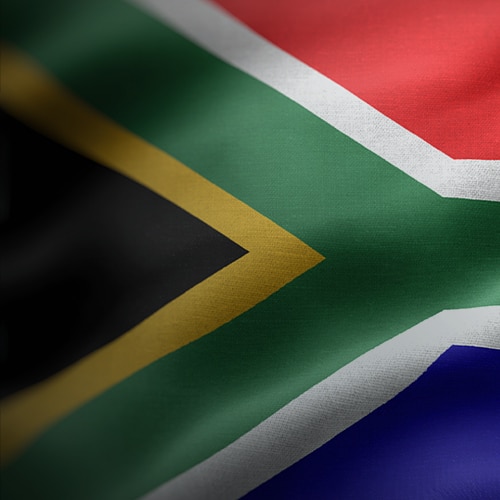Coffee Table Economics (CTE) with Anchor, by Casey Sprake, is distributed periodically. CTE is a compilation of Casey’s research, analysis, and perspectives on key South African (SA) and global economic data such as inflation, spending trends, and international market dynamics, including socio-political events and the multiple factors shaping the world economy.
Executive summary
In this week’s edition, we highlight the following:
- Inflation steadies, but policy crossroads loom: SARB caught between cut and caution. SA June headline inflation rose slightly to 3.0% YoY, driven by food and fuel price dynamics, though it remains at the lower end of the SA Reserve Bank’s (SARB) 3%–6% target range. While the near-term inflation outlook justifies a cut, geopolitical and policy uncertainties may prompt the Monetary Policy Committee (MPC) to err on the side of caution.
- Lower rates, higher hopes: Sentiment improves amid mixed economic signals. SA consumer sentiment showed signs of recovery in 2Q25, with the FNB/BER Consumer Confidence Index (CCI) improving to -10, up from -20 in 1Q5. While this marks a meaningful rebound, confidence remains firmly below the long-term average of 0, signalling ongoing caution among households.
- IMF sees brighter global horizon, SA left in the shadows. The International Monetary Fund (IMF) has nudged its global growth forecast higher to 3.0% for 2025, as resilient demand, looser financial conditions, and softer US tariffs offer a glimmer of optimism. SA, meanwhile, is stuck in low gear, with growth forecast at just 1.0% amid stalled reforms and mounting domestic pressures. With US trade tensions escalating, the stakes are rising fast, making reform and diplomacy more urgent than ever.
Inflation steadies, but policy crossroads loom: SARB caught between cut and caution
SA June headline inflation rose slightly to 3.0% YoY, from 2.8% in May, remaining at the lower bound of the SARB’s 3%–6% target range. MoM, inflation ticked up to 0.3% from 0.2% in May, primarily driven by food inflation. More broadly, underlying inflation momentum showed some acceleration as the three-month rate rose by 0.5% and the six-month measure by 2.1%. This suggests a gradual upward trend in inflation rather than temporary volatility, though pressures remain contained overall. Fuel price dynamics played a key role. Although pump prices fell marginally in June (-0.4% MoM), the pace of annual fuel deflation slowed to -11.2% YoY from -14.9% YoY in May due to base effects. This marked slowdown contributed notably to the uptick in headline inflation. Fuel deflation is expected to moderate further following the ZAc52/litre price rise in July (+3.1% MoM), driven by a weaker rand and higher global oil prices. This will likely push monthly CPI higher in the coming print and may have second-round effects on transport and logistics costs.
Food and non-alcoholic beverage (FNAB) inflation also rose, increasing to 5.1% YoY in June from 4.8% in May. This was primarily due to a sharp increase in meat prices (+2.2% MoM/+6.6% YoY, up from 4.4% YoY in May), which offset easing inflation in bread and cereals (which slowed to 3.0% YoY from 4.5%). Looking ahead, disruptions linked to animal disease outbreaks (such as avian flu and foot-and-mouth disease) could keep meat prices elevated through 3Q25, with interventions in Brazil only expected to have an effect later in the year. Persistent food inflation poses a risk to low-income households and could temper real disposable incomes.
June core inflation (which strips out volatile components such as food and energy to offer a clearer picture of underlying price dynamics) edged slightly lower to 2.9% YoY from May’s 3.0% print. This was driven by continued easing in core goods prices, especially for durable and semi-durable goods, which reflects both weak domestic demand and a muted exchange rate pass-through. Services inflation inched up to 3.7% YoY, underpinned by a modest rise in rental inflation, while insurance pressures softened. These dynamics- combined with rand strength, subdued rental trends and softening inflation expectations- point to limited underlying inflationary pressure and signal weak pricing power in the economy.
Overall, inflation remains relatively low by historical standards, supporting a real interest rate that is high by global comparisons. While headline CPI is expected to rise gradually in 2H25—reaching around 4% YoY by year-end—this will primarily reflect statistical base effects, particularly for food and fuel. Electricity and municipal tariff hikes in July will also contribute to the near-term rise, but underlying inflation is expected to remain contained.
The soft inflation backdrop, combined with sluggish domestic demand, elevated unemployment, and declining business confidence, strengthens the case for policy easing. As it stands, we expect a 25-bpt interest rate cut at Thursday’s (31 July) MPC meeting, albeit without full conviction. This view is supported by subdued inflation and weak economic growth, with inflation expectations continuing to soften. The Bureau for Economic Research’s (BER) 2Q25 survey shows expectations clustered around 4.5% across all horizons. From a real economy perspective, the case for additional policy support remains strong. However, uncertainty around the inflation targeting framework tempers our conviction.
While the SARB has signalled support for a lower inflation target (most clearly in its May MPC communication), there remains no clarity on the policy path. The finance minister has expressed support, pending further consultation, while Treasury is assessing fiscal implications. Meanwhile, SARB Governor Lesetja Kganyago has cautioned against moving too quickly with future rate cuts, especially considering growth risks linked to the imminent imposition of 30% US tariffs on SA agricultural and manufacturing exports. These trade-related headwinds, alongside the evolving inflation target debate, could prompt caution from the MPC. Although we expect a cut, a hold remains a risk, especially if the SARB prioritises anchoring its credibility in the face of potential tariff-driven inflation pressure. The direction of the inflation target and how it interacts with inflation dynamics in 2025 will remain central to monetary policy decisions in the future.
The bottom line
While the near-term inflation outlook justifies a cut, geopolitical and policy uncertainties may prompt the MPC to err on the side of caution. Whilst inflation remains contained and inflation expectations are anchored, the SARB is navigating a complex balancing act between the need to support growth, manage inflation dynamics, and maintain credibility amid an evolving policy and global trade landscape.
Lower rates, higher hopes: Sentiment improves amid mixed economic signals
SA consumer sentiment has shown signs of recovery in 2Q25, with the FNB/BER CCI improving to -10, up from -20 in 1Q25. While this marks a meaningful rebound, confidence remains firmly below the long-term average of 0, signalling ongoing caution among households. The CCI is a widely used economic indicator that reflects consumers’ perceptions of their personal financial outlook, the broader economic environment, and whether they believe it is an appropriate time to make significant purchases, such as durable goods. Positive readings typically indicate an increased willingness to spend, supporting economic activity, while negative readings suggest hesitancy and reflect underlying economic concerns or uncertainty.
In 2Q25, sentiment around the economic outlook and the suitability of the present time to buy durable goods showed smaller contractions. In contrast, the outlook for household finances improved into positive territory, rising to +9 from -1 in 1Q25. This improvement was underpinned by the rollback and eventual removal of a proposed 2% VAT increase, no additional tax hikes, and reduced debt servicing costs because of cumulative interest rate cuts. Since September 2024, the SARB has implemented four 25-bpt rate cuts (excluding March 2025), offering some reprieve to indebted households through lower repayment burdens. However, this was partially offset by falling real incomes between March and May. Pension withdrawals and paused tariffs (particularly the suspension of the US’s April’s Liberation Day import tariffs) also contributed to softer price pressures and improved sentiment.
Confidence by income group remains varied. Low-income households (earning below R5,000/month) reported the most negative sentiment, with a CCI reading of -15 (from -17), reflecting persistent strain from high unemployment and weak wage growth. High-income earners (R20,000-plus) saw sentiment at -11, while middle-income households (R5,000–R20,000) showed the strongest relative confidence, with a significantly improved reading of -7 (from -19). Recent retail sales data confirm some underlying resilience in household spending. April retail sales volumes rose by 5.1% YoY, and May new vehicle sales surged by 30% YoY. These indicators suggest that consumer spending remained well-supported during 2Q25, although growth is expected to moderate going forward.
Looking ahead, the anticipated interest rate cut in July may cushion middle- and high-income consumers against the effects of rising inflation and higher personal taxes. However, rising food prices are expected to weigh heavily on low-income households, limiting their spending power.
The bottom line
Overall, while lower interest rates have helped stabilise consumer sentiment, they cannot fully compensate for SA’s deeper structural challenges. High unemployment, poor freight infrastructure, and regulatory constraints (especially in the mining sector) continue to limit job creation and sustainable growth. Substantive improvements in consumer confidence will likely depend on economic growth reaching 3% and more, underpinned by structural reform rather than just cyclical interest rate support.
IMF sees brighter global horizon, SA left in the shadows
In its latest World Economic Outlook (WEO) update released this week, the IMF raised its global growth projections slightly, forecasting global GDP growth of 3.0% in 2025 (up from 2.8% in April) and 3.1% in 2026 (April: 3.0%). These upward revisions reflect a series of unexpectedly supportive developments, including front-loaded economic activity ahead of anticipated tariff increases, lower-than-expected US tariff rates, easing global financial conditions (partly influenced by a weaker US dollar) and renewed fiscal expansion across both advanced and emerging economies.
These projections are critical as they shape investor sentiment, guide policymaking, and influence global financial flows. A higher growth trajectory suggests a more resilient global economy than previously anticipated, potentially cushioning against downside risks. However, the IMF notes that global headline inflation is still expected to decline gradually to 4.2% in 2025 and 3.6% in 2026, in line with earlier estimates. That said, inflation dynamics remain uneven, with the US expected to stay above its inflation target, while other major economies, including in Europe and Asia, continue to face more subdued price pressures. Despite the marginally improved outlook, the IMF underscores that the global risk environment remains tilted to the downside. Threats such as renewed tariff escalations, escalating geopolitical tensions, global supply chain disruptions, and unsustainable fiscal paths pose considerable risks. These could exert upward pressure on long-term interest rates and tighten global financial conditions. Additionally, rising policy fragmentation and uncertainty may fuel market volatility, dampening both investment and growth. On the upside, however, the IMF highlights that a more predictable and cooperative global trade framework could significantly boost economic momentum. Against this backdrop, it calls on policymakers to prioritise structural reforms, macroeconomic stability, fiscal consolidation, and confidence-building measures to safeguard and extend the recovery.
For SA, however, the IMF’s outlook is starkly unchanged. Growth is projected at just 1.0% in 2025 and 1.3% in 2026, underscoring the persistent structural weaknesses weighing on the economy. The IMF attributes the country’s anaemic performance primarily to delayed reform implementation, particularly in the energy sector and network industries, which continue to stifle productivity, investment, and overall economic dynamism. These challenges are further compounded by long-standing socio-economic constraints: extremely high unemployment, entrenched inequality, and limited fiscal headroom. Together, these factors constrain domestic demand and curtail the government’s ability to respond effectively to both external shocks and internal economic needs.
The subdued growth outlook comes at a particularly delicate time for the country. This, as South African trade officials are reportedly racing to secure a deal with the US (or at the very least, stave off the imposition of steep new tariffs), with bilateral negotiations remaining tense. SA is still waiting to hear from the US about a trade proposal it submitted in June as the 1 August tariff deadline looms. The terms were already known and had previously been rejected by Washington, offering little new ground for optimism. In a further sign of deteriorating diplomatic ties, US President Donald Trump once again publicly reiterated his dissatisfaction with SA this week, even suggesting that he is unlikely to attend the upcoming G20 leaders’ summit in November. The US is SA’s second-largest bilateral trading partner after China.
The bottom line
This brewing trade tension presents additional downside risks to SA’s already fragile outlook. A deterioration in trade relations with the US could undermine exports, deter investment, and further destabilise an economy already hampered by structural bottlenecks. The IMF’s projections serve as a timely reminder of the urgent need for domestic reform, policy credibility, and strategic international engagement to unlock SA’s growth potential and insulate it from growing global volatility.




